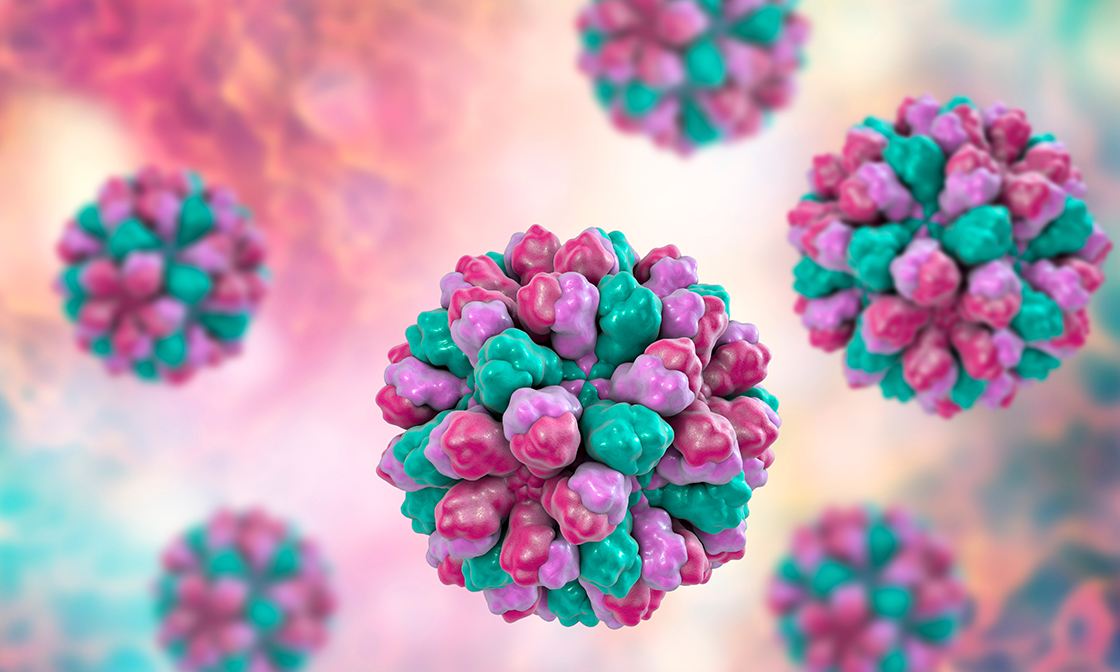During the winter months, as the temperature outside decreases, the risk of norovirus increases. According to the Centers for Disease Control and Prevention (CDC), norovirus activity is the highest between the months of December and March.
I was first introduced to this nasty little virus in late 2011, as a PhD student at North Carolina State University (NCSU). I had previously conducted research on bacterial foodborne pathogens like Listeria monocytogenes, but I wanted to learn more about foodborne viruses. I became interested because viruses are so highly different than bacteria – for instance, they cannot survive on their own and require a host to replicate. In fact, some would argue whether they are alive at all! If you’re curious about the type of research I conducted on norovirus, take a look at this recently published manuscript in Food Microbiology that I co-authored.
As we enter norovirus season, I thought it would be useful to quickly discuss some key facts about this virus. Below are a few frequently asked questions regarding norovirus to help increase awareness of the virus and promote a culture of food safety.
- Why is it so important to better understand norovirus? Norovirus causes over 50% of foodborne outbreaks in the United States every year. The more we understand about this virus, the better equipped we are to develop tools and strategies to combat it when handling and preparing food. We can literally translate this new information and knowledge into safer food.
- What are some surprising facts about norovirus? Scientists were unable to grow norovirus in a lab for nearly 50 years, which has been a huge barrier to understanding it. However, researchers in multiple laboratories have recently developed methods to grow the virus and made truly groundbreaking discoveries in norovirus research. In addition, unlike flu and cold viruses, norovirus can survive on surfaces for weeks! There have been documented instances where people have become sick from touching contaminated surfaces several weeks after the virus was deposited. This emphasizes the importance of cleaning and disinfecting areas that have been exposed to the virus.
- Are there any misconceptions about norovirus or hand hygiene? The biggest misconception is that alcohol-based hand sanitizers are effective against norovirus. The jury is still out on this, as alcohol has been shown to have limited efficacy against the virus. For now, proper hand washing with soap and running water is still the best way to remove the virus from hands. Although alcohol-based hand sanitizers are arguably better than not washing your hands at all, hand washing with soap and running water when possible is still ideal.
- Norovirus cases typically spike in the winter months. Why does this occur? Norovirus cases are more frequent during this time because people spend more time indoors when it is colder outside. Closer physical proximity to each other makes it easier for the virus to spread from person to person. Norovirus, like all other human viruses, must grow inside a human host.
- What are the top challenges when it comes to combatting norovirus and how do facilities overcome these obstacles? The main challenge is keeping employees who are exhibiting signs of norovirus, including vomiting and diarrhea, from coming to work. This is especially important for food handlers and is an easy way to reduce the risk of a norovirus outbreak. Another challenge is proper disinfection of the virus when it is deposited on a surface. The virus can spread nearly 25 feet from where an "incident" occurs, so everything in that area should be disinfected with a product registered with the Environmental Protection Agency (EPA) to help limit the risk of an outbreak.
For more information about solutions for your business, visit our Personal Care page.



